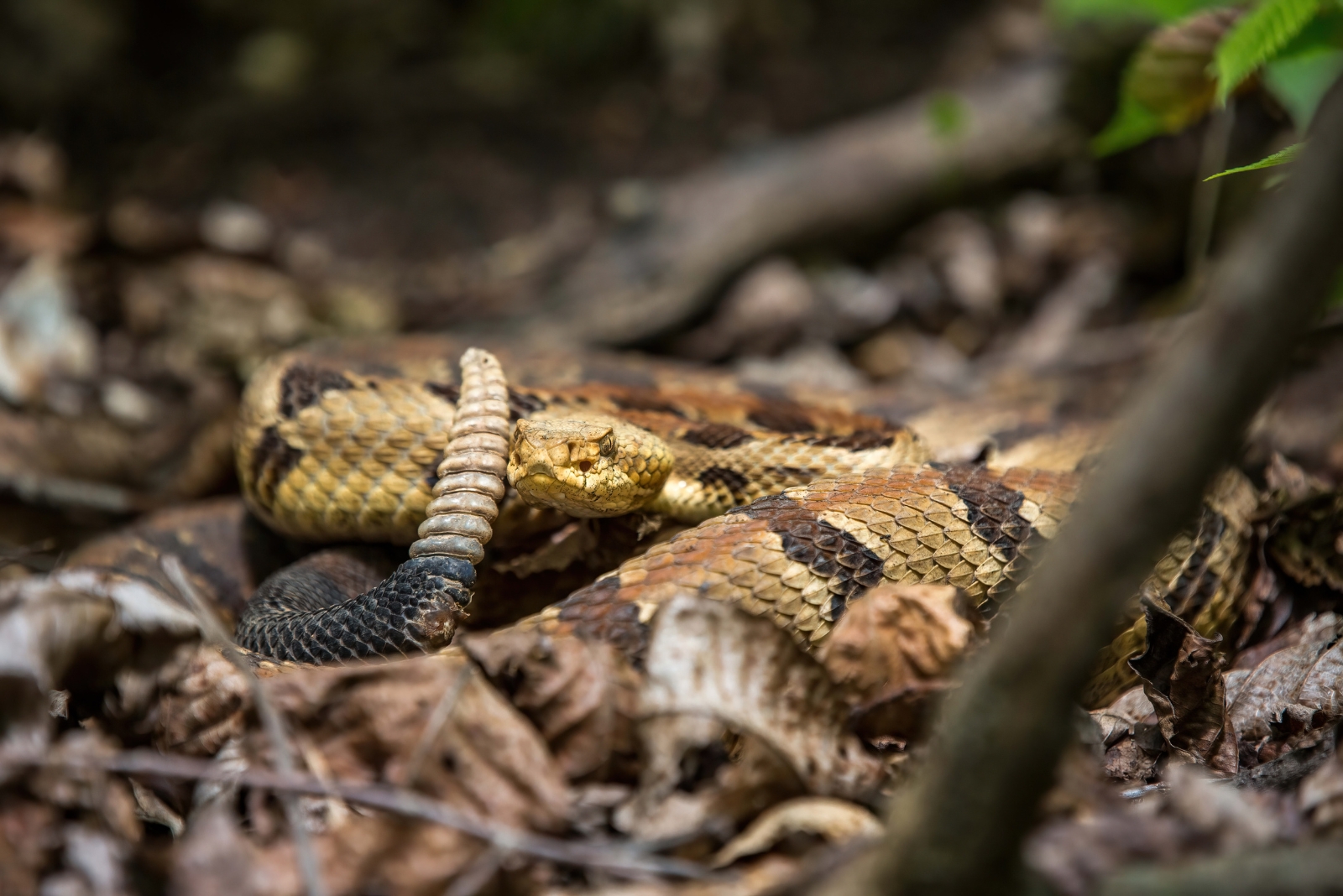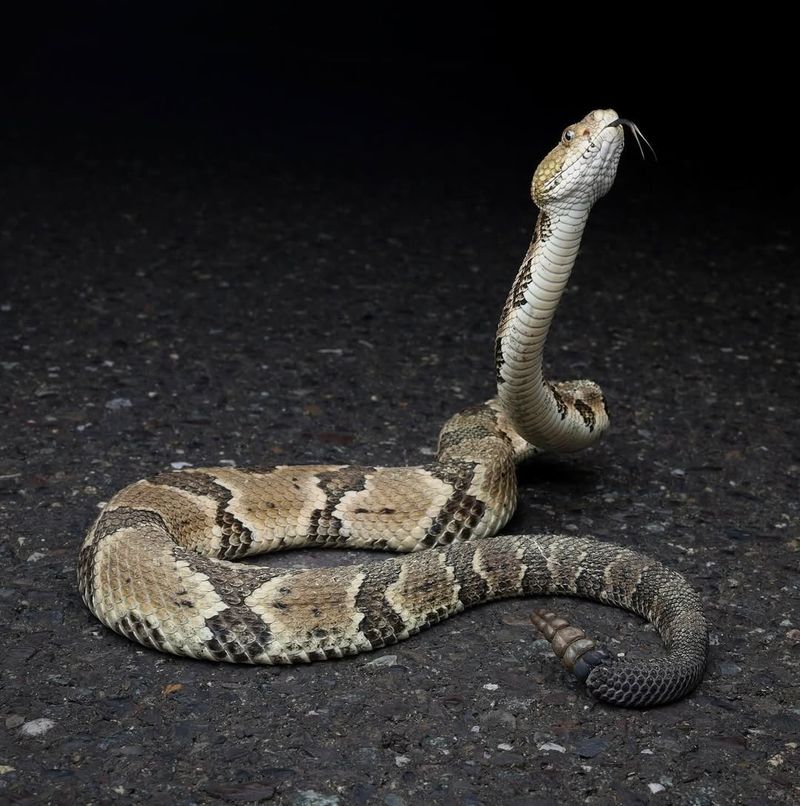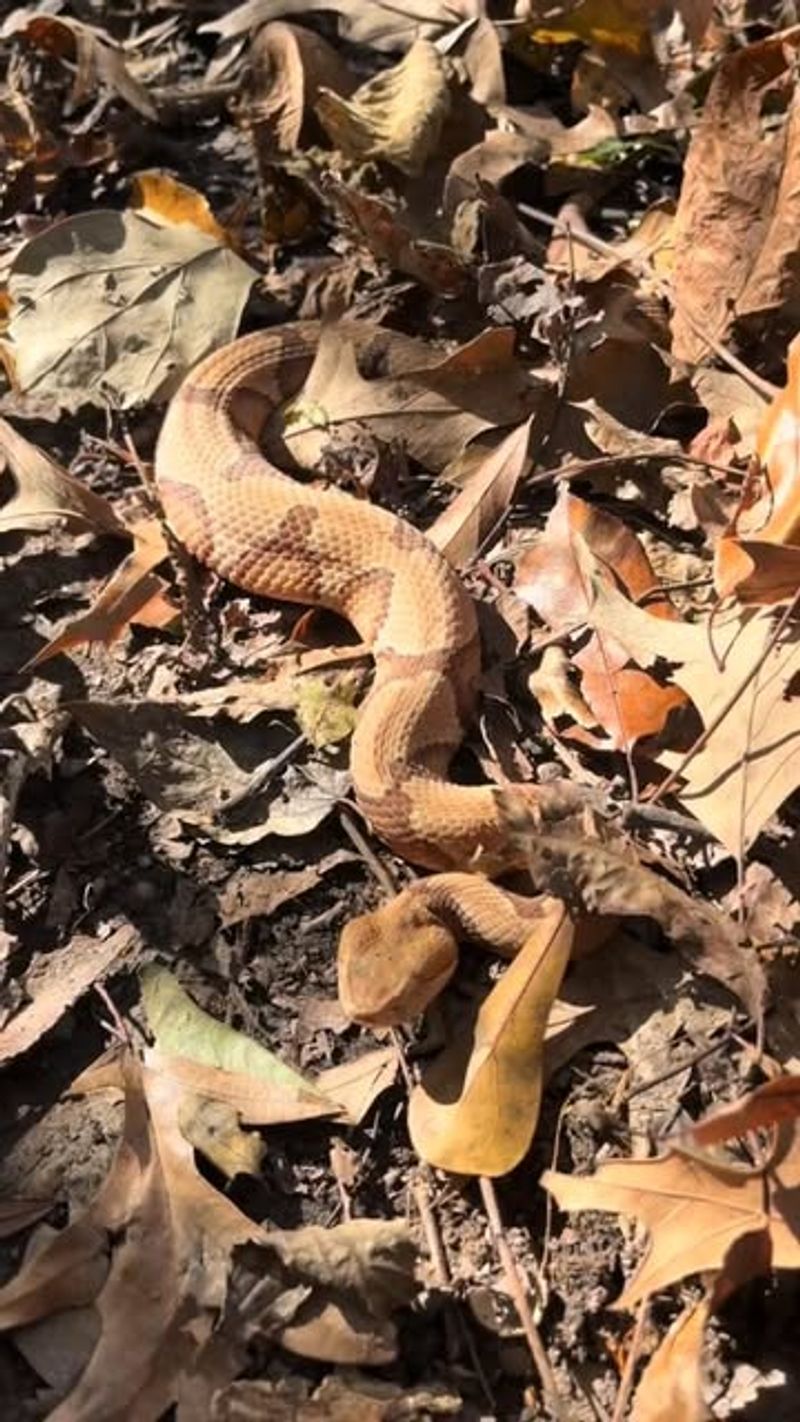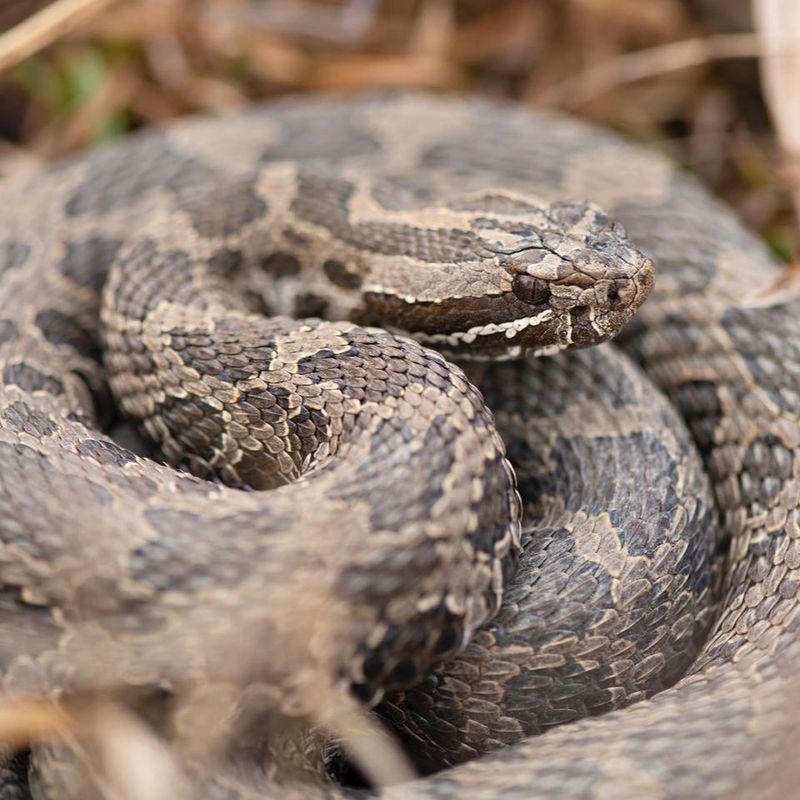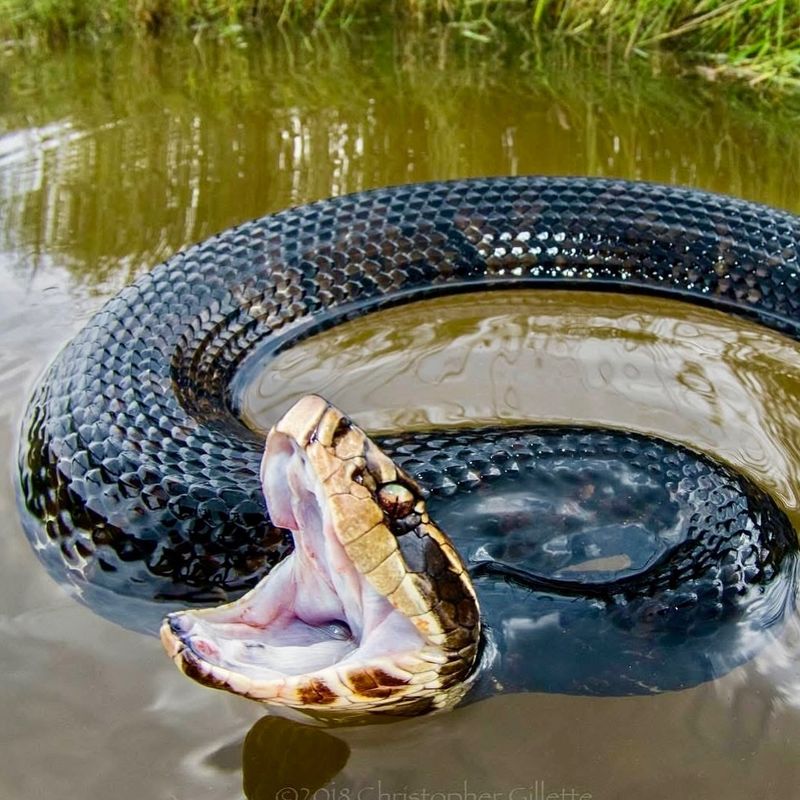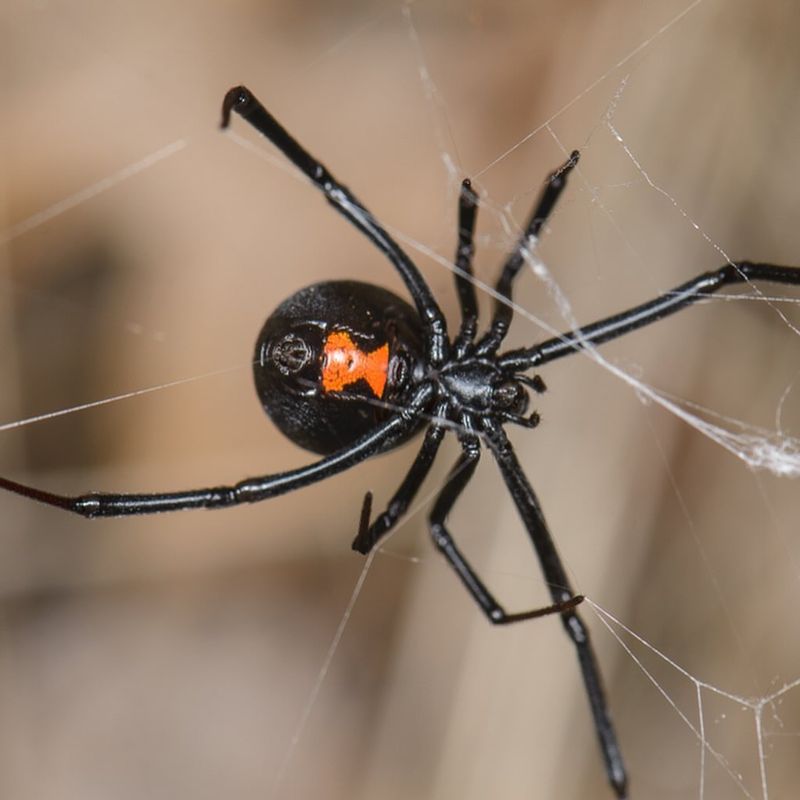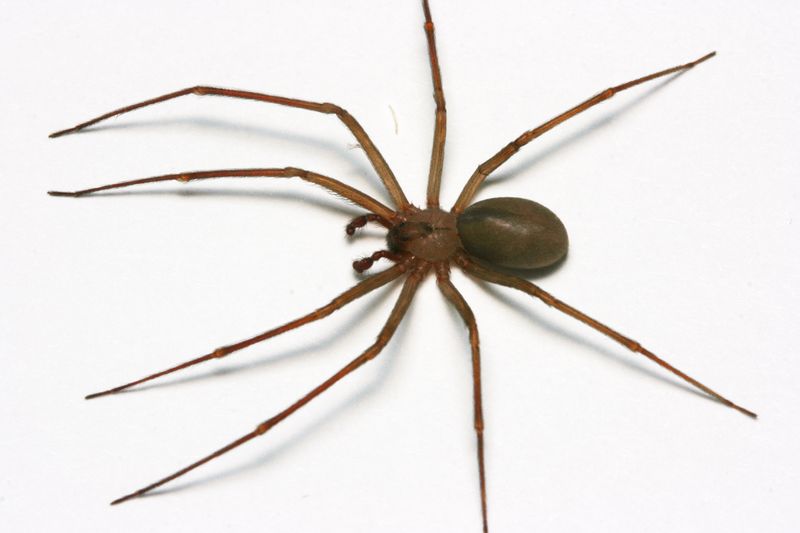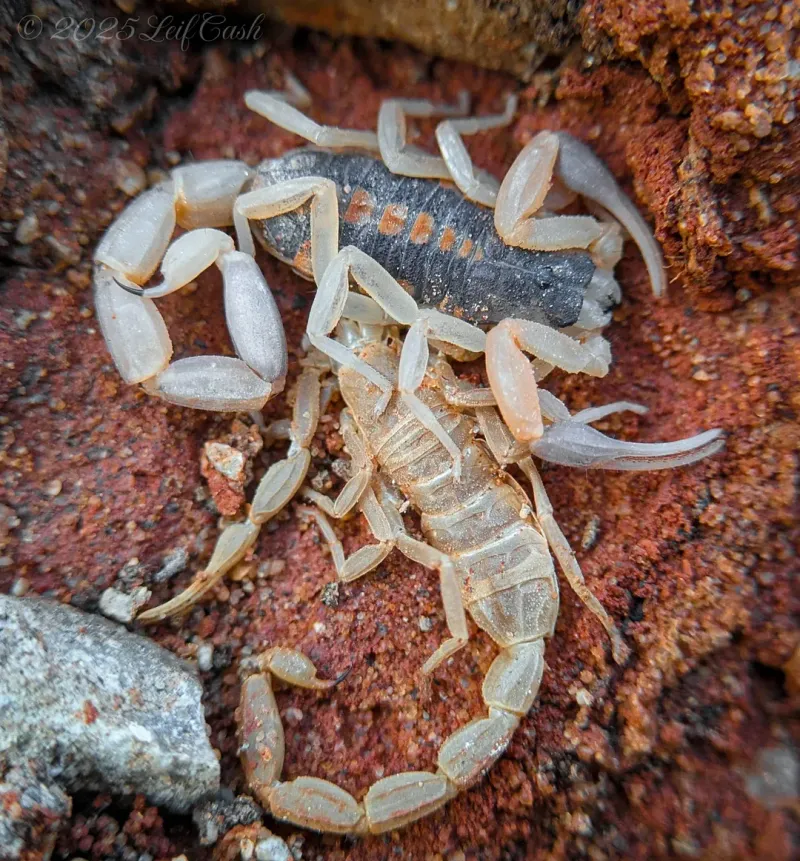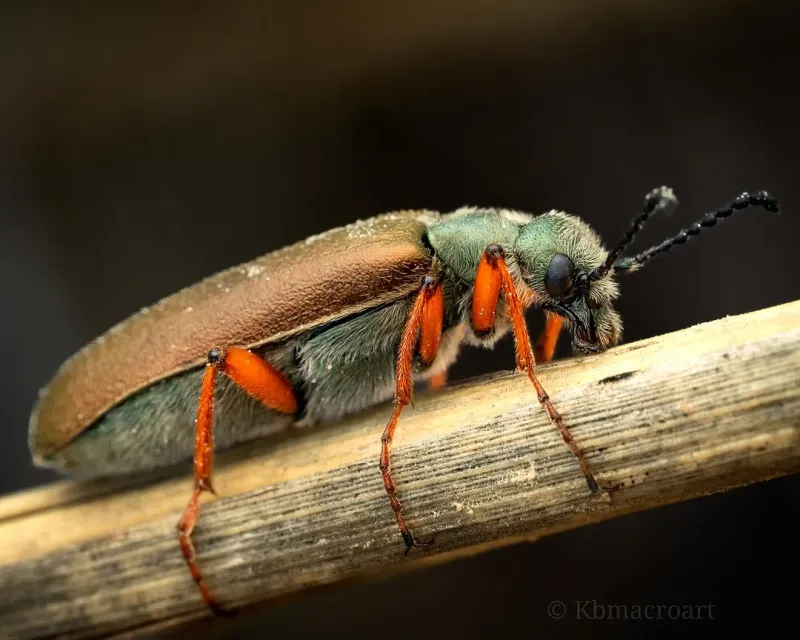Kansas might not seem like a hotspot for venomous animals, but a few do call the state home. I’ve crossed paths with one or two while out gardening, and it definitely got my attention.
Knowing what to look for helps you stay calm and cautious. Awareness is the best defense when sharing space with nature’s risky side.
1. Timber Rattlesnake
Kansas woodlands and rocky hillsides often hide these dangerous reptiles. Timber rattlesnakes grow up to five feet long and sport dark crossbands across their bodies. Their venom can cause serious tissue damage and requires immediate medical attention.
Listen for their warning rattle before stepping over logs or rocks. They prefer staying hidden during hot afternoons, becoming more active during cooler morning and evening hours. Always wear boots when hiking through wooded areas around your property.
2. Copperhead Snake
With copper-colored heads and hourglass patterns, these snakes blend perfectly into leaf litter. Copperheads rank as one of the most common venomous snakes Kansas homeowners encounter, especially near woodpiles and stone walls. Their bites are painful but rarely fatal to humans.
Clear away brush piles and keep grass trimmed short to discourage them from settling near your home. They hunt mice and insects, so controlling rodent populations helps reduce their presence. Children should learn to recognize their distinctive markings.
3. Massasauga Rattlesnake
Smaller than their timber cousins, massasaugas rarely exceed two feet in length. Kansas wetlands and marshy areas provide perfect habitat for these shy rattlers. Dark blotches run down their gray-brown backs, making them easier to spot than copperheads.
These snakes face declining numbers and stay away from people whenever possible. Bites happen mostly when someone accidentally steps on one. If you live near wet prairies or drainage areas, watch where you walk during warm months.
4. Western Cottonmouth
Also called water moccasins, cottonmouths live near streams, ponds, and rivers in southeastern Kansas. Their dark bodies and white mouth interiors make them unmistakable when threatened. Unlike most water snakes, they hold their ground instead of fleeing.
Anglers and swimmers should exercise extra caution around water edges during summer. These aggressive defenders will strike if cornered or surprised. Keep dogs on leashes near waterways since curious pets often get too close.
5. Black Widow Spider
Shiny black bodies with red hourglass markings make female black widows recognizable throughout Kansas. They spin messy webs in dark corners of garages, sheds, and woodpiles. Only females bite, and their venom attacks the nervous system.
Check gloves and shoes before wearing them if stored in garages or basements. Clean cluttered storage areas regularly to eliminate hiding spots. Bites cause severe muscle cramps and pain, requiring prompt medical care for young children and elderly individuals.
6. Brown Recluse Spider
A dark violin shape on their backs helps identify these tan-brown spiders found across Kansas homes. Brown recluses prefer undisturbed spaces like closets, attics, and cardboard boxes. Their venom destroys skin tissue, sometimes creating wounds that take months to heal.
Shake out clothing and bedding that has been stored away. Seal cracks in walls and foundations to prevent indoor invasions. Most bites occur when people accidentally trap the spider against their skin while dressing or sleeping.
7. Striped Bark Scorpion
Kansas hosts one scorpion species, and the striped bark scorpion lives mainly in the southern regions. Pale yellow with dark stripes, they measure about two inches long including their curved tails. Their stings feel like bee stings but can cause severe reactions in sensitive individuals.
These nocturnal hunters hide under tree bark, rocks, and firewood during daylight hours. Wear gloves when moving outdoor items. Check shoes before putting them on if left outside overnight.
8. Blister Beetle
Gardens across Kansas attract these plant-eating insects during summer months. Blister beetles come in various colors including black, gray, and metallic shades. When crushed or squeezed against skin, they release cantharidin, a chemical causing painful blisters and skin irritation.
Never swat or crush these beetles with bare hands. Gently brush them away using gloves or tools instead. Livestock can get sick from eating hay containing dead beetles, so inspect animal feed carefully in rural Kansas areas.
9. Wheel Bug
Named for the cogwheel-shaped crest on their backs, wheel bugs are beneficial predators eating harmful garden pests throughout Kansas. They measure over an inch long and use sharp, needle-like mouthparts to inject digestive enzymes into prey. Defensive bites to humans cause intense, burning pain lasting several hours.
Admire these helpful insects from a distance and never handle them. They move slowly and only bite when grabbed or threatened. Most Kansas gardeners appreciate having them around despite the bite risk.

